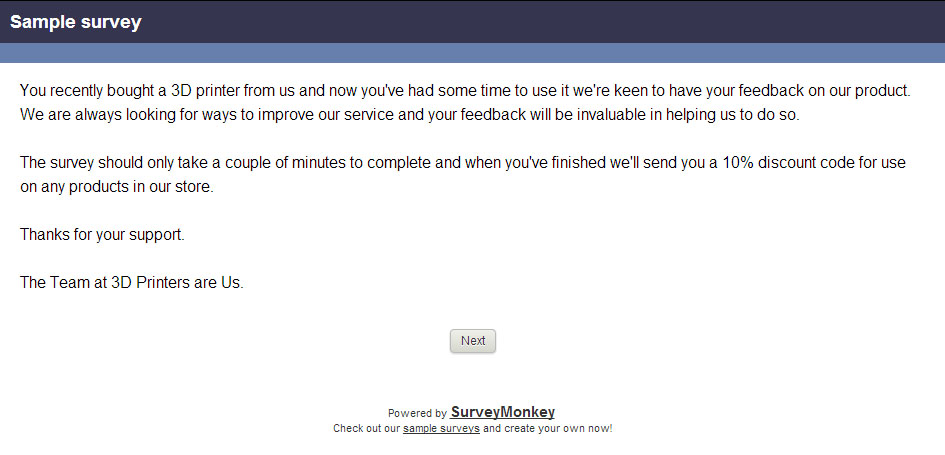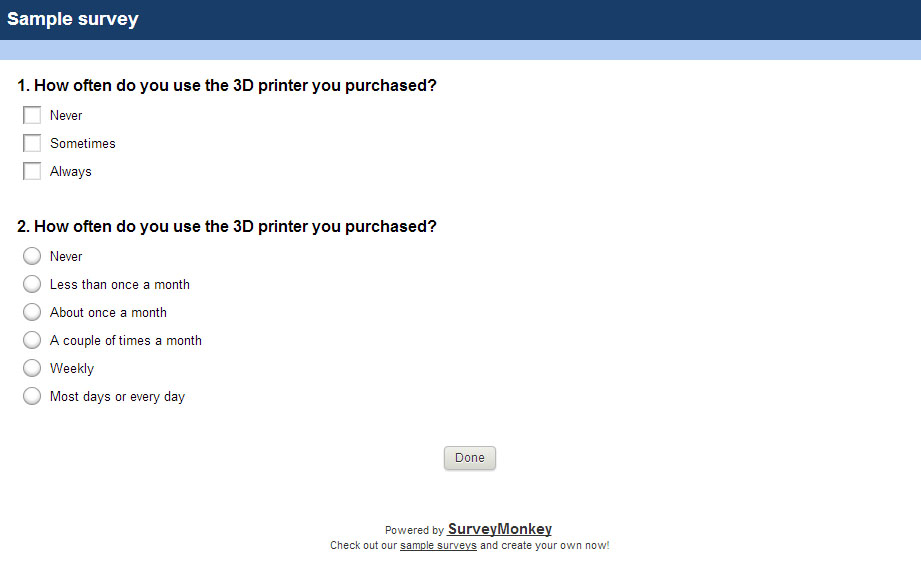There are experts who will design and administer customer satisfaction or feedback surveys, for a fee. But I’ll let you in to a secret: you might be able to save some money and do it yourself.
Sites like Survey Monkey take a lot of the pain out of creating and distributing surveys – and of processing the results. One of the great things about such sites is that it’s now pretty easy to deliver surveys to customers, but you need to really know what you’re doing.
Too many businesses, small and large, mess up their customer surveys, so I’m going to show you the ten most common customer survey mistakes businesses make, and how you can avoid them and put together a survey that works.
1. They Send Too Many Surveys Out
This is a crucial starting point. Just because it’s easy to send out surveys, it doesn’t mean you need to. Remember the story of “The Boy who Cried Wolf”? Overload your customers or potential customers with largely pointless surveys and, when you have an important question, there’s a risk they’ll be too used to ignoring you and won’t respond.
2. They Don’t Know What They Want To Know
You must clearly define what it is you want to ask. Keeping things as brief as possible is important, but not if you fail to ask the right question in the first place. Think carefully about what you want to ask and how the responses can help you answer that question. Don’t leave room for people to answer the wrong question – a problem which I see all too often, in online surveys in particular.
3. They Don’t Let Their Customers Know Who They are and What They Want
It’s a good idea to give a (short) bit of background about why you’re asking the questions, if you can. It’s also a good idea to explain how important their feedback is to you, and how long the survey is likely to take.
4. They Don’t Give Any Incentives
If you really want people to answer your survey, give them incentives to respond and they’re much more likely to do so. Incentives don’t have to be big to have an impact – everyone likes to think they’re in with a chance of a prize. Prize draws, even for something as small as a £10 Amazon voucher, or time-limited discount codes if you’re selling a product, are both good options.

5. They don’t keep it short and to the point
People are busy. They may want to help you, but they don’t want to feel like you’re wasting their time. So don’t ask lots of questions you don’t really need answers to and don’t ask lots of variations on the same question. It’s lazy and it’s a great way to turn people off.
Also, don’t put lots of questions on the same page. Use multiple pages and customers can click ‘next’ to move on. Having to scroll down, particularly on a small screen, may put them off.
6. They Ask the wrong people
It may be that you’re only really interested in hearing from one particular group of your clients, but you don’t have a way of identifying them from your records. If that’s the case, your first question(s) should check whether the person responding falls into this group or not.
If not, thank them for their time but don’t waste any more of it. There’s something very frustrating about responding to questions which really don’t apply to you.
7. They Misuse Multiple Choice Questions
Sites like SurveyMonkey allow you to structure your questions in a number of ways, but the most common ones you’re likely to use are multiple-choice questions or open-ended questions.
There are 2 common errors in surveys using multiple-choice questions: Failing to cover all options and not being precise enough. In the example below, Question 2 is going to give far more useful results than Question 1.

It’s also worth setting it so people can only tick one box, if that’s appropriate. If someone ticks ‘less than once a month’ and ‘a couple of times a month’ – which people have been known to – then their response to that question is of no use to you.
8. They Don’t Include an “Other” Category
A multiple choice list of options can rarely be comprehensive, so inclusion of an ‘other’ option is advisable. However, it’s not that useful if all you know is that they shop somewhere that isn’t on your list, so remember to include those magic words ‘please specify’ and a free text box allowing them to do so.
9. They Don’t Think About Open Ended Questions
The great thing about open-ended questions is that they allow the respondent to say exactly what they want to say and can give you a lot of information. But there are two big drawbacks:
- Firstly it’s a lot easier for people to respond to a (well-written) multi-choice question than to think of what to put in an empty free-text box so they’re more likely to respond.
- Secondly they’re not so easy to process the results from. If 80 people respond to your survey and 60 of them fill in the free-text box, that’s 60 different responses.
You may well be able to put them into broad categories yourself but that’s time consuming and tricky. So, think carefully if you need to use an open-ended question or if you’d be better using multiple-response and other.
10. “Was there anything else?”
At the end of a survey, it’s always useful to include one final, open-ended text box:
Thanks to statistics wiz Ellie Twigg for this blog. Ellie has done statistical analysis and data research for counselling and mental health services, both as a freelance data analyst and whilst working for companies such as CORE IMS and the University of Leeds.
Discover
The 12 Marketing Secrets of Fast-Growth Companies
Find out what they do to achieve outrageous business success

Get your free copy

 By
By 
we are working in pvc compound marketing and products of pipes others